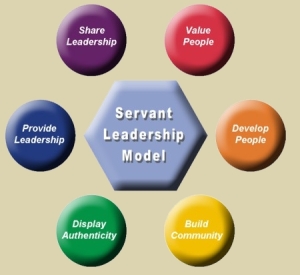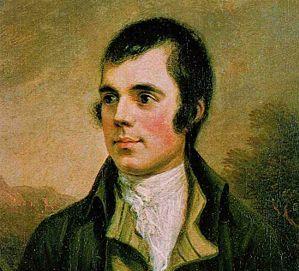This is the second in a series which goes to the heart of the challenge facing our economy – Implementing Successful and Sustainable Change.
Since 1996 when Kotter’s research revealed that only 30% of change initiatives succeed. Even today, when McKinsey surveyed 3000 business executives this ratio of 1 in 3 still applied in 2009.
You see for people to be clear on their expectations of others they need to understand the change from their perspective. The problem is that managers use rational models which they think just makes a common sense and why things go wrong from the get go Why?
Because when they simply implement their prescription, they disregard or are not aware of certain, sometimes irrational- but predictable elements of human nature. Unfortunately, Yes. I say that because only 30% of change works and only 10% of such initiatives deliver everything intended by those planning the change.
Why has this lack of success been so difficult to improve upon?
At its core is this quote from Rabbie Burns:
“O wad some Power the giftie gie us
To see oursels as ithers see us!
It wad frae monie a blunder free us”
“O would some Power the gift to give us
To see ourselves as others see us!
It would from many a blunder free us”
Robert Burns
Another translation
The name of this radio program is “Walk the Talk” or translated “Do what I do” But what talk?
In times of change conventional wisdom suggests that the leaders of change should model the desired change to mobilize influential leaders to drive change deep into the organization yet….
So, you’re saying before leaders start walking their talk they need to be careful. What do you see as the pitfalls leaders should be aware of?
Two spring to mind.
First, Leaders think they have already made the change and we need to get everyone on side. Elaborate – behind closed doors – advisors, consultants etc.
Second, they think they are the panacea rather than mobilizing others to get things to happen.
Let’s take the first one.
Most senior executives generally buy into Gandhi’s astute observation:
“Be the change you want to see in the world”
Yet knowing something and committing oneself to change too often don’t lead to significant results
So, leaders change their behavior and yet nothing happens…I am confused…
And so are leaders…..when they make a change. Too often most leaders don’t count themselves among those who need to change.
Like if you pulled them to one side and whispered “Are you really customer focused?” they would say “No” (I don’t have time to be…have you seen the paperwork I have to get through or ….P & L)
The fact is we all consistently think we are better than we actually are – in psychology it’s called “self serving bias”
For Example, 94% of men rate themselves in the top half of male athletic ability
So, when it comes to change Walking your Own Talk it’s not so much as a desire to show people what to do BUT the real bottleneck is leaders knowing what to change at a personal level.
It sounds like many leaders don’t take a cool hard look at themselves before embarking on “Walking the talk” and prescribing what others should do?
Exactly, we often see this in our alignment work. Consistently, leaders have 70%+ more expectations than others realize and leaders are often oblivious of what their people expect of them.
What can leaders do to overcome this potential blind spot?
There are several ways using surveys like 360 degrees feedback, or simply asking regularly what should I be doing differently? Or one large company has what they call the “Ring of Fire”
Direct feedback in answer to
1. “What makes you great?”
2. “What holds you back?”
Are people really going to reply honestly?
No, not if the climate has not been set.
Yes, if the Leaders don’t believe they are the cure all for their organizations problems.
Yet, it’s sound advice that they should mobilize others, who by experience, respect and ability can become influential it getting things to happen. Yet, too often the influential leader’s role has shifted from being that helpful element to a broad set of actions, to being a cure all.
It’s a mindset problem leaders have. They forget they need to create the framework for changes not persuade people to adopt their prescriptions for change.
That sounds like leaders should let people come up with their own solutions…
No & Yes.
Persuasion or selling the need for change and what the change needs to be get welded together in leaders’ minds.
Leaders need to create receptivity for change (Framework) and not stray into the debilitating arena of “I know what we need to do…..”
The dangers are that you are seen to be part of the problem, you risk cutting off the growing motivation to do something differently and focus people on being spectators of change rather than being players in the game.
In reality it is often unexpected people who feel compelled to step up to drive change e.g. Genzink Steel – work scheduler
That’s why keeping leaders focused on creating the framework of lasting change is vital.
Too often we see leaders vested in their narrow focus unwittingly excluding the very people the need to create this framework.
Ok. Got that. So, What does effective leadership look like?
If you turn to Robert Greenleaf’s philosophy it can help leaders create the frame and not try to build their house on their own.
“Greenleaf – The servant-leader is servant first… Becoming a servant-leader begins with the natural feeling that one wants to serve, to serve first. Then conscious choice brings one to aspire to lead. That person is sharply different from one who is leader first… The difference manifests itself in the care taken by the servant first to make sure that other people’s highest priority needs are being served. The best test, and the most difficult to administer, is this:
the natural feeling that one wants to serve, to serve first. Then conscious choice brings one to aspire to lead. That person is sharply different from one who is leader first… The difference manifests itself in the care taken by the servant first to make sure that other people’s highest priority needs are being served. The best test, and the most difficult to administer, is this:
- Do those served grow as people?
- Do they, while being served, become healthier, wiser, freer, more autonomous, more likely themselves to become servants?”
Robert Greenleaf’s most important work, Servant Leadership (1977/2002), is subtitled A Journey into the Nature of Legitimate Power & Greatness. Though his terms are secular ones, his definition of leadership is the clearest statement of this idea that the needs of followers are holy and that legitimate use of power arises from the consent of followers.
Like Christ washing the disciple’s feet – what did this do for their perception of his leadership?
Here’s a tip for now:
How often do you proactively ask for feedback?
Remember alignment is a two way street
- What you expect of me
- What I think you expect of me
- What I expect of you
- What you think I expect of you
[polldaddy poll=4604847]
Great, but how can this help me?
This is probably the first thing on your mind after reading this Blog. How about asking us? The first call is free! Just email me to set it up. Don’t wait, get The Crispian Advantage working for you!. If our conversation leaves you needing more, we offer at a reasonable fee telephone and video coaching on change, alignment, and personal and executive performance that improve the bottom line. If that still doesn’t do it, we’ll work with you on a solution.




